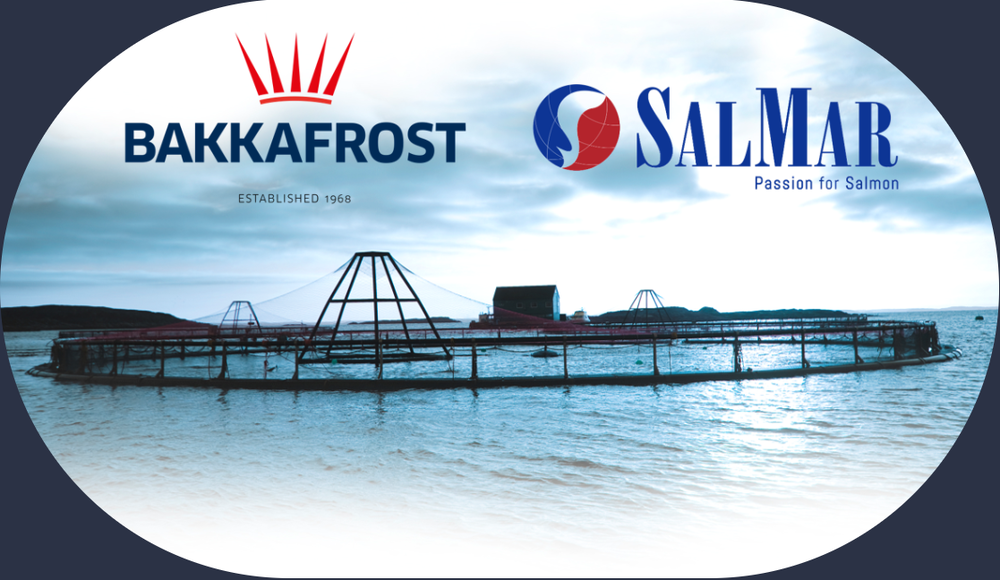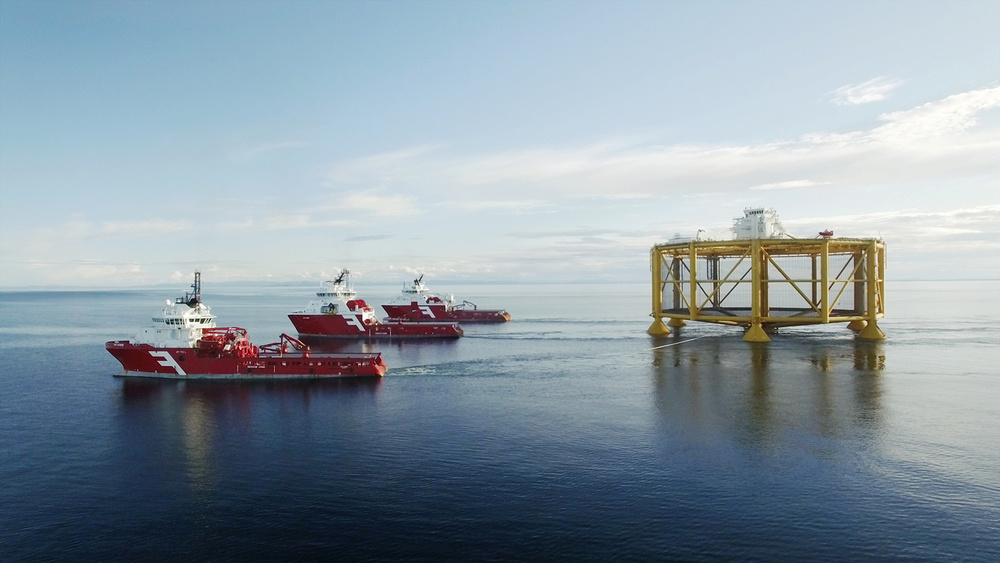1. Chile Report: Salmon Farming
At the beginning of 2019, we took the opportunity to visit salmon farming operations in the Chilean summer.
Oslo’s seafood stock market is currently witnessing a tug-of-war between two salmon companies, both intent on taking the title for the highest valuation. Or rather, investors are grouping themselves and paying significant amounts for their favourites. In this blog, we will compare the strengths and growth opportunities of both companies before picking our favourite.
Bakkafrost's farms are located in the Faroe Islands and Scotland, where it acquired the Scottish Salmon Company two years ago. SalMar, on the other hand, is a Scandinavian farmer based in central and northern Norway. It also has holdings in locations in Iceland and Scotland. Bakkafrost expects a volume of around 106,000 tonnes of salmon in 2021, while in the larger SalMar this will be around 188,000 tonnes proportionally. Both companies have strongly integrated value chains, and Bakkafrost also has its own feed production facility. Thanks to the lowest production costs in the industry, both companies regularly achieve EBIT margins of 30% and are thus rightly known as the margin kings. The people pulling the strings at both companies are tied to the success of the respective share price, because both are long-term shareholders and wish to expand their global market position. The coronavirus pandemic has shown in no uncertain terms that characteristics such as low costs are very important in the long term, and are accordingly worth something on the stock market.

On the tiny Faroe Islands situated between Iceland and Great Britain, Bakkafrost radiates power. Paths to the political decision-makers are short, and regulation aims to stimulate the important fish export industry to further growth. With good biological conditions, Bakkafrost regularly succeeds in producing larger salmon than its Norwegian competitors, which achieve premium prices in the normal market environment. The company’s strategy of breeding larger fish over a longer farming cycle also feeds into its land-based operations, where salmon in recirculating water systems weigh an average of 382 grammes before being transferred to cages on the coast. In the recently acquired Scottish operation, the salmon weigh only 89 grammes, meaning that they have to spend longer in the open sea before they reach a reasonable market weight. The risk of being infected by pathogens during this time is correspondingly higher. Bakkafrost wishes to apply its home-grown strategy in the Scottish operation and is thus investing heavily in land-based plants.
In the Norwegian salmon industry, people like to speak of the SalMar standard, which is used as a synonym for well-run farms. To this end, the company has set up its own training school, which its employees attend regularly. SalMar puts the salmon at the centre of its work, which it likes to demonstrate through the slogan “Passion for Salmon”. It is clear that there is more to this than just animal welfare: healthy salmon kept in perfect farming conditions go hand-in-hand with sustainably low production costs, because the treatment of diseases is cost-intensive. In this respect, animal welfare and profit are not mutually exclusive. SalMar is consistently aware of which fish size yields the greatest profit at which location, and it knows the marginal costs at every stage of production, even if the fish are kept at a specific location for just one extra day. Their employees are also well incentivized, so that everyone pulls together. In addition, SalMar can rely on its own in-house rescue teams, which can be called by the site manager at the slightest sign of illness.
In both Norway and the Faroe Islands, new licenses for cage systems near the coast are rarely issued. This most important production step has proved to be a bottleneck for some years now, which has encouraged investment in new regions such as Iceland. Bakkafrost has also opted for longer farming cycles on land (the so-called “large smolt strategy”). SalMar also seems to be considering this, but its investment in this area is (still) much lower than Bakkafrost’s. SalMar's focus is on farming in the open sea. As a pioneer in the field, the company completed its first farming cycles in exposed locations in 2017, in an offshore facility which cost around USD 100 million. The tests were also a success in terms of farming costs, so they applied to the Norwegian government for further licenses to farm 90 kilometres off the coast of central Norway. This application is pending as politicians define the framework conditions. The strategy’s potential, like the ocean, would be practically endless and not limited to Norwegian waters. Bakkafrost, for its part, also advocates offshore farming. From 2025, it plans to carry out the final phase of its salmon farming operations in more exposed locations near the Faroe Islands archipelago in order to ensure further, steady volume growth.
Although the utopian expansion plans of some completely land-based farms have caused substantial outcry in the industry over the past two years, traditional farmers like Bakkafrost and SalMar have kept their cool. They understand the economics very well, and for decades have farmed salmon for the first few months in entirely land-based operations, as the self-proclaimed pioneers now wish to do up to a market weight of 4-5 kilogrammes. Taking into account the need to artificially replicate the environmental conditions found in fjords and the associated consumption of resources (concrete, metals, electricity, etc.) – and all this on land that is already scarce – land-based farming can probably never match the costs of traditional farming methods. Industrial tycoons are well aware of this. Should salmon prices continue to rise and make the more expensive technology profitable, then traditional farmers will also benefit immediately from a margin increase. At this point, when the economic risk is significantly lower, they will decide whether to invest in growth projects using this technology, which they are already more than familiar with.
Returning to our comparison of Bakkafrost and SalMar, let’s take a look at the valutation*. Based on the profit estimates for 2022e, Bakkafrost is trading at 15.4x EBIT in relation to the enterprise value. SalMar is slightly higher, at 16.5x the EV/EBIT multiplier. By comparing data of third party analysts it is important to check the plausibility of their consensus estimates. According to our analysis, Bakkafrost’s valuation has already priced in the successful implementation of its domestic strategy in Scotland with promising margins, although it still needs to provide the proof. Bakkafrost also regularly demonstrates to the market how it wants to expand its production in the Faroe Islands to a 100k tonne platform over the next five years (2021: 66k tonnes), a fact which analysts are happy to include in their price targets. At SalMar, on the other hand, sustained high margins are expected, but the company exhibits little imagination when it comes to growth. That said, the offshore project and the large smolt strategy, which still offers plenty of room for expansion, provide some promising opportunities.
Our in-house opinion is reflected in the Global Fish Fund’s portfolio. Since summer 2019 we have put our money on SalMar, which has advanced 67% since then, although Bakkafrost didn’t do badly either with 54%. However, we see considerable implementation risks at Bakkafrost, and thus disappointments rather than positive surprises in the quarterly figures, especially in phases of high valuations. We held on to around 3% of the Scottish Salmon Company for our investors and are familiar with the Scottish asset acquired by Bakkafrost. At the time, the offer seemed very attractive to us as sellers, which is why we were happy to part with the shares. Since then, the segment has regularly performed disappointingly and it will be a few more years before the fruits of the investment can be reaped. At SalMar, on the other hand, analysts are likely to start pricing in strong growth if the Norwegian government makes a positive decision on offshore farming. And this is where analysts are specialists in boom phases. SalMar has done its part at least, by providing analysts with the formula and timetable for growth price-setting in its February 2021 quarterly report. Once again, it should just be a matter of time.
*Valuation from May 25, 2021 (Bakkafrost 725.00 NOK; SalMar 602.00 NOK)

Comments
Enrico Fardella
July 25, 2022
Really enjoyed this post. Really thank you! Keep writing.